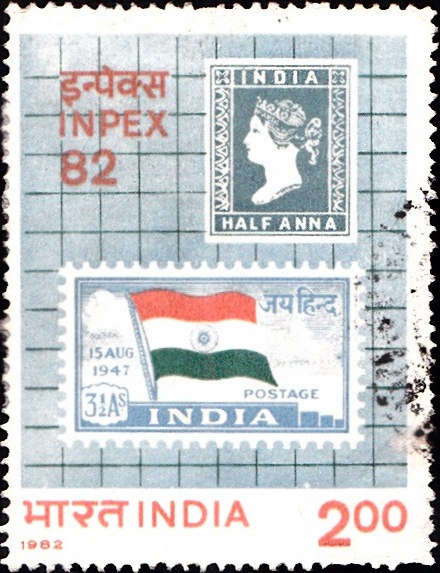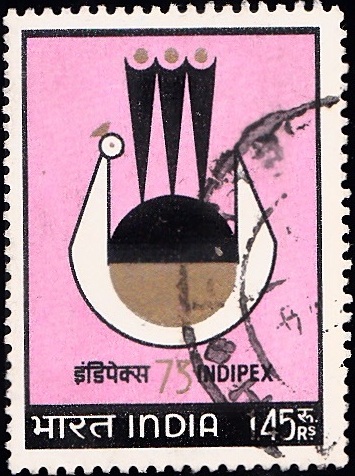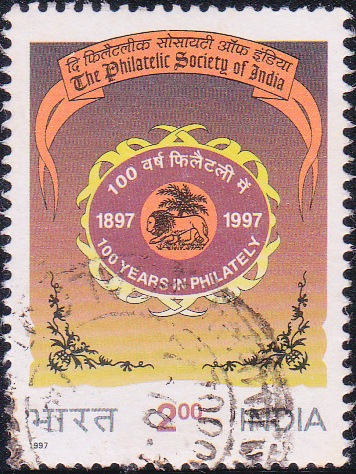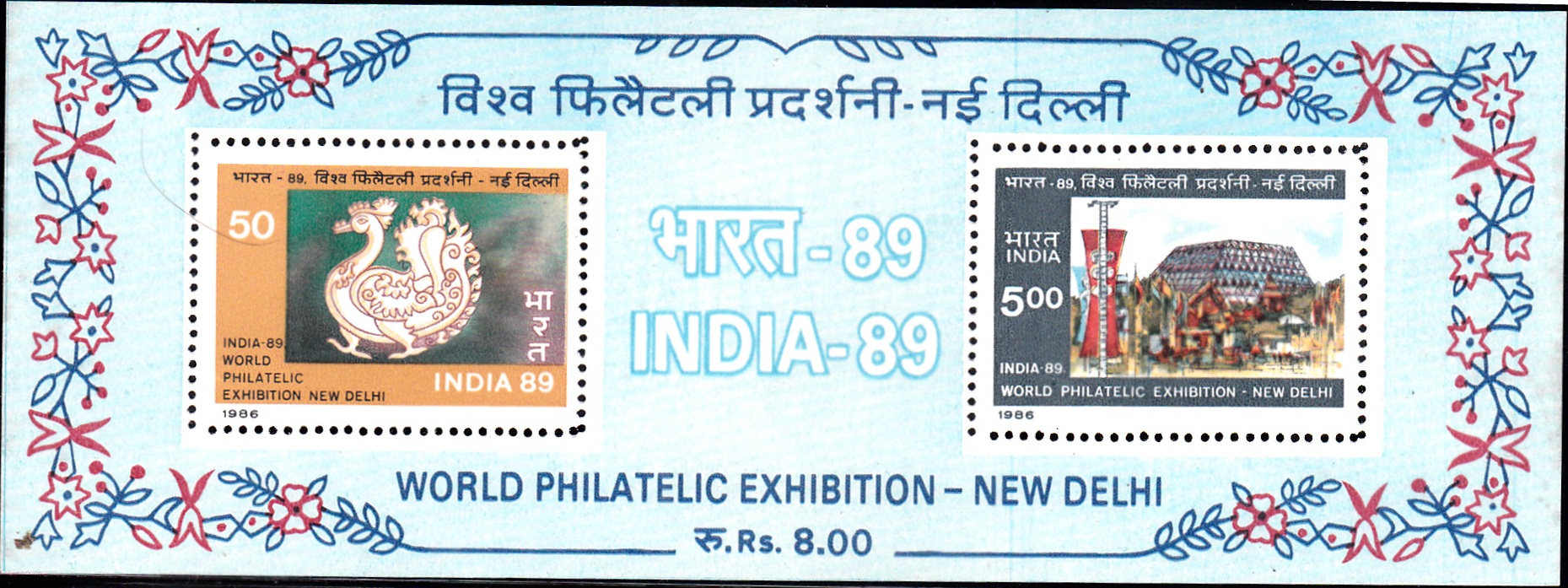
India-89
A Miniature Sheet consisting of 2 nos. of postage stamp on the India–89, World Philatelic Exhibition :

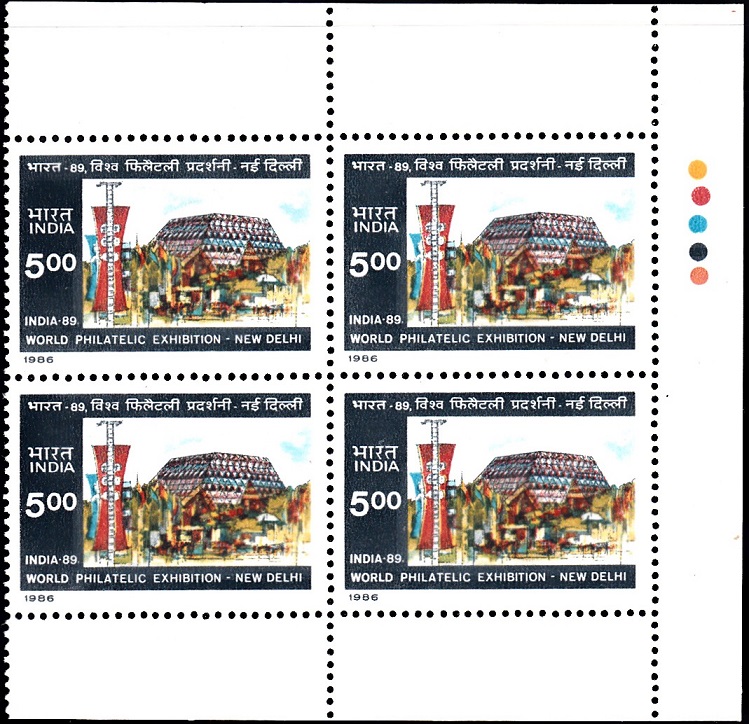
![1083 India 89 - International Stamp Exhibition [India Stamp 1987]](https://istampgallery.com/wp-content/uploads/2016/06/1083-India-89-International-Stamp-Exhibition-India-Stamp-1987.jpg)
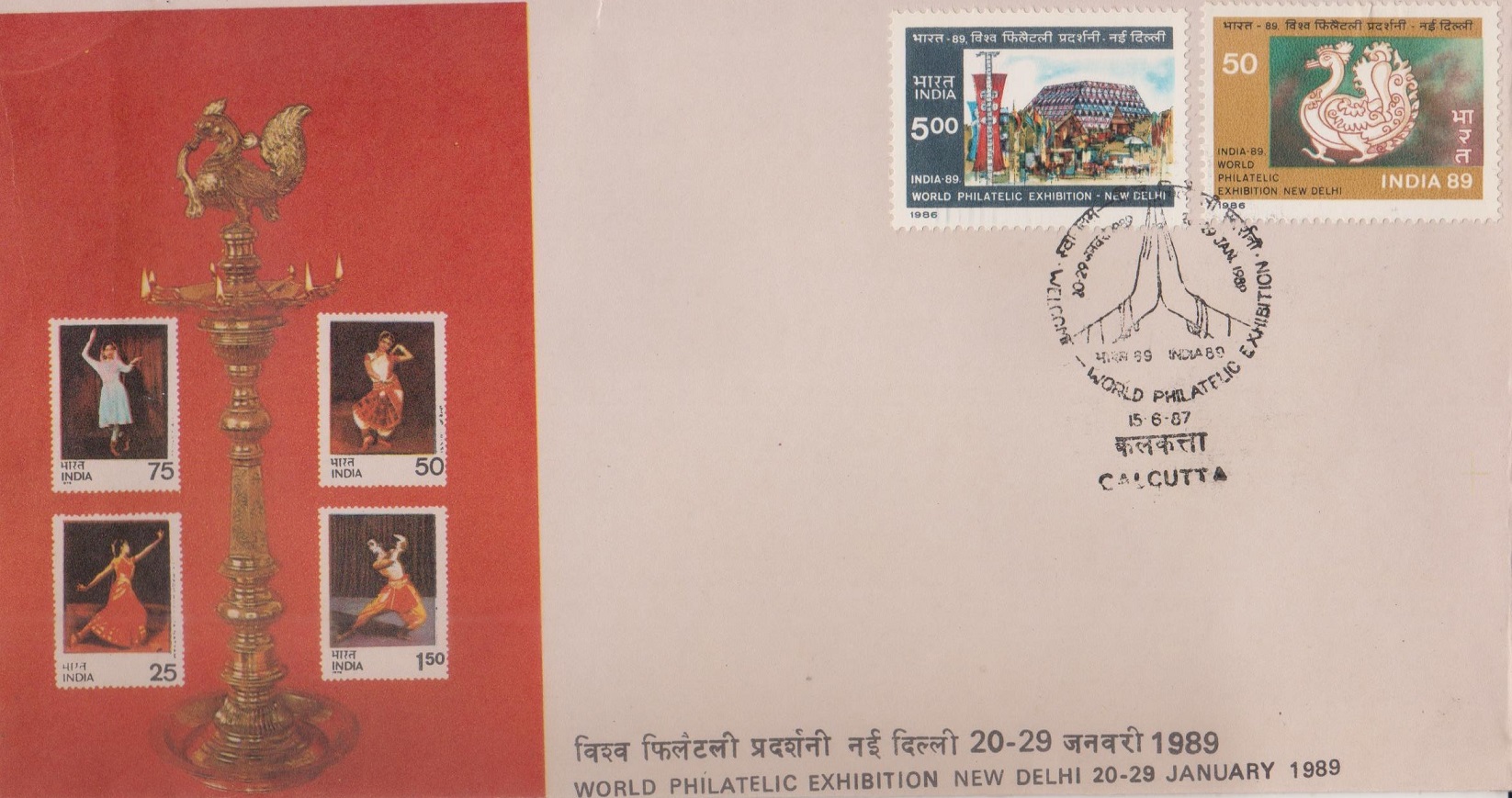 Issued by India
Issued by India
Issued on Jun 13, 1987 [stamps] and Jun 15, 1987 [Miniature Sheet]
Issued for : To herald the announcement of this prestigious exhibition, the Department of Posts is proud to bring out two special stamps.
Description of Designs : The first stamp depicts the Logo of the exhibition and the second the Venue of the exhibition. The Logo is a stylised Swan adapted from a stone motif of the 14th century Lepakshi temple in Andhra Pradesh. The Swan has traditionally been regarded as a messenger and harbinger of good news. The other stamp on the Venue is an artist’s impression of the Hall of Nations which is the most prestigious building in the sprawling Pragati Maidan exhibition ground of New Delhi. Both the stamps had been printed in 1986 by the ISP, Nashik and kept in readiness for release. The Logo has been designed by Mrs. Alka Sharma. The multicolour stamps in the denomination of 50 P and 500 P depicting the Logo and the venue have been designed by Sh. Pulak Biswas. The First Day Cover has been designed by Smt. Alka Sharma. The Cancellation and the Miniature sheet have been designed by Miss Nenu Bagga.
Type : Miniature Sheet, Mint Condition
Colour : Multi Colour
Denomination : 50 & 500 Paise [stamps] and 800 Paise [Miniature Sheet]
Overall size : 3.91 x 2.90 cms. [stamps] and 5.80 x 15.64 cms. [Miniature Sheet]
Printing size : 3.55 x 2.54 cms. [stamps] and 5.80 x 15.64 cms. [Miniature Sheet]
Perforation : 13 x 13
Paper : Imported unwater marked Adhesive Gr. coated stamp paper
Number Printed : 15,00,000 [stamps] and 1,50,000 [miniature sheet]
Number per issue sheet : 35 [stamps] and 24 [miniature sheet]
Printing Process : Photogravure
Printer : India Security Press
About :
- India–89, World Philatelic Exhibition is being hosted at New Delhi from 20.1.89 to 29.1.89. This exhibition is being organised by the Department of Posts, Govt of India in co-operation with the Philatelic Congress of India. It is being held under the patronage of the Federation Internationale de Philatelie (FIP), granted to the exhibition during the 55th Congress of the FIP held at Stockholm.
- The first of such international exhibitions was organised by the Department of Posts in a small way in 1954 as a part of the centenary celebrations of the Indian Postage Stamp. This was followed by INDIPEX-73, India International Philatelic Exhibition organised by the Department of Posts and held in New Delhi from 14th to 23rd November, 1973. In 1977, the Philatelic Congress of India organised ASIANA 77 at Bangalore from 19th October to 23rd October, 1977. In 1980, the Department of Posts and the Philatelic Congress of India jointly hosted India-80 International Stamp Exhibition in New Delhi from 25th January to 3rd February, 1980. This exhibition marked the centenary of the Post Card Service in India as also the 125th anniversary of the First Indian Postage Stamp and was the first International Stamp Exhibition to be held in Asia under the patronage of the Federation Internationale de Philatelie. The stage is now set for India-89 World Philatelic Exhibition which is being planned in a spectacular way with all conveniences and facilities which accompany such exhibitions.
- Objectives
For the Department of Posts and the Philatelic Congress of India, the common objective in organising India 89 is to promote and disseminate information about the fascinating hobby of philately. It will give an opportunity to the world philatelic community to display their collections to a discerning international audience. India-89 will provide yet another occasion for the philatelists the world over to establish new contacts, renew friendships and for fostering healthy competition amongst themselves in the colourful and festive atmosphere of New Delhi at the peak of the tourist season. It will also be an opportunity for learning about the latest techniques in designing and printing of stamps. Last, but not the least, it will be an occasion to enjoy the beauty of man’s creativeness, of progress, of civilisation, of nature in all its myriad forms, because, ultimately we believe that these small pieces of paper, which we call stamps, depict a country’s ethos.



